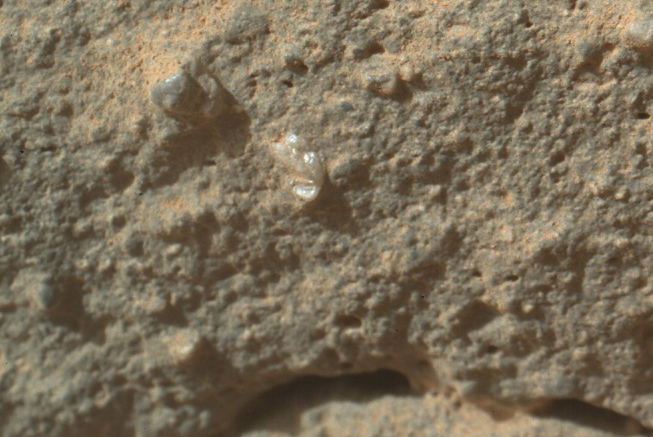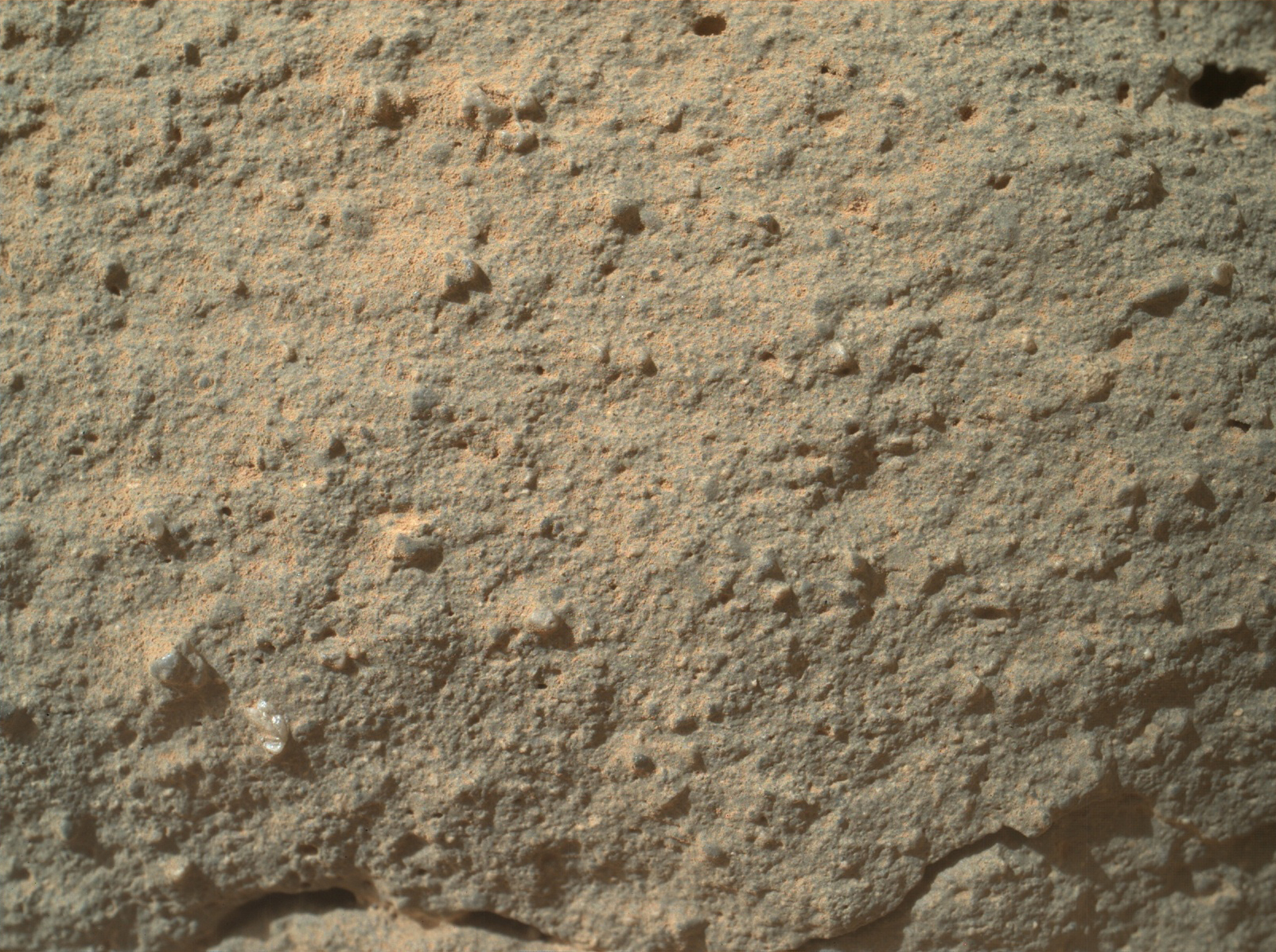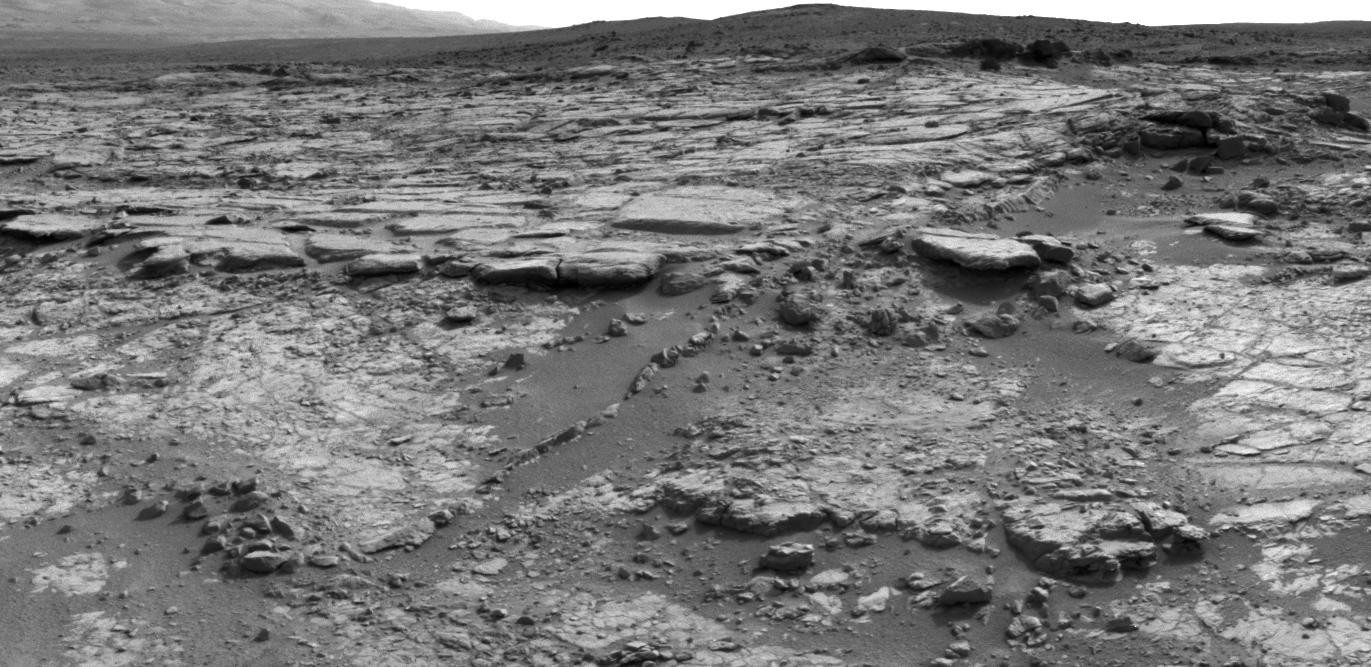Mars Rover Curiosity Finds Martian 'Flower' and Snake-Like Rock

New photos of Mars from NASA's Curiosity rover have sparked a buzz of discussion over an odd formation that some have dubbed a "flower" embedded in a Martian rock. The rover has also found a snake-like rock formation winding across the Red Planet's surface.
The so-called Mars "flower" photo was snapped on Dec. 19 by the microscope-like Mars Hand Lens Imager at the end of Curiosity's robotic arm. At the lower left of the image is a strange, apparently transparent formation that some Internet forum users on the website claimed looked much like a flower, according to NBCNews.com's photoblog.
NASA posted a raw, unprocessed version of the photo online on the Curiosity rover’s mission website overseen by the agency's Jet Propulsion Laboratory in Pasadena, Calif. Internet forum readers on the website Above Top Secret christened the object a flower, according to NBCNews.com's Alan Boyle.
Curiosity has seen bits of clear plastic (pieces of the rover itself) on the surface of Mars before, but NASA officials said that doesn’t appear to be the case this time.
JPL spokesman Guy Webster told NBCNews.com that the object "appears to be part of the rock, not debris from the spacecraft." [Face on Mars & More Martian Illusions (Photos)]
On Friday (Jan. 4), NASA also unveiled a new panorama of Curiosity’s current location on Mars, a shallow depression called YellowknifeBayinside the vast Gale Crater. The image is a mosaic of photos that is dominated by a sinewy, snake-like rock winding across its center.
NASA scientists have dubbed the rock "Snake River." It is a thin curving line of dark rock that rises above the flatter rocks of its surroundings, making it an intriguing target for Curiosity's instruments, JPL officials said.
Breaking space news, the latest updates on rocket launches, skywatching events and more!
"It's one piece of the puzzle," rover mission project scientist John Grotzinger, of the California Institute of Technology in Pasadena, said in a statement. "It has a crosscutting relationship to the surrounding rock and appears to have formed after the deposition of the layer that it transects."
The $2.5 billion Mars rover Curiosity landed on Aug. 5 to begin a two-year primary mission of determining whether the planet could have once been habitable for primitive microbial life. It is currently driving toward a 3-mile-high (5 kilometers) mountain rising up from the center of its Gale Crater landing site.
Curiosity is destined for a point called Glenelg at the base of the Martian peak, which scientists have named MountSharp. But first, mission scientists are looking over Curiosity's images of YellowknifeBay in order to pick a rock target for the rover to use as its first drill site. That drill test is expected soon, JPL officials said.
“The area the rover is in looks good for our first drilling target," rover project manager Richard Cook said.
You can follow SPACE.com Managing Editor Tariq Malik on Twitter @tariqjmalik. Follow SPACE.com for the latest in space science and exploration news on Twitter @Spacedotcom and on Facebook.

Tariq is the award-winning Editor-in-Chief of Space.com and joined the team in 2001. He covers human spaceflight, as well as skywatching and entertainment. He became Space.com's Editor-in-Chief in 2019. Before joining Space.com, Tariq was a staff reporter for The Los Angeles Times covering education and city beats in La Habra, Fullerton and Huntington Beach. He's a recipient of the 2022 Harry Kolcum Award for excellence in space reporting and the 2025 Space Pioneer Award from the National Space Society. He is an Eagle Scout and Space Camp alum with journalism degrees from the USC and NYU. You can find Tariq at Space.com and as the co-host to the This Week In Space podcast on the TWiT network. To see his latest project, you can follow Tariq on Twitter @tariqjmalik.



